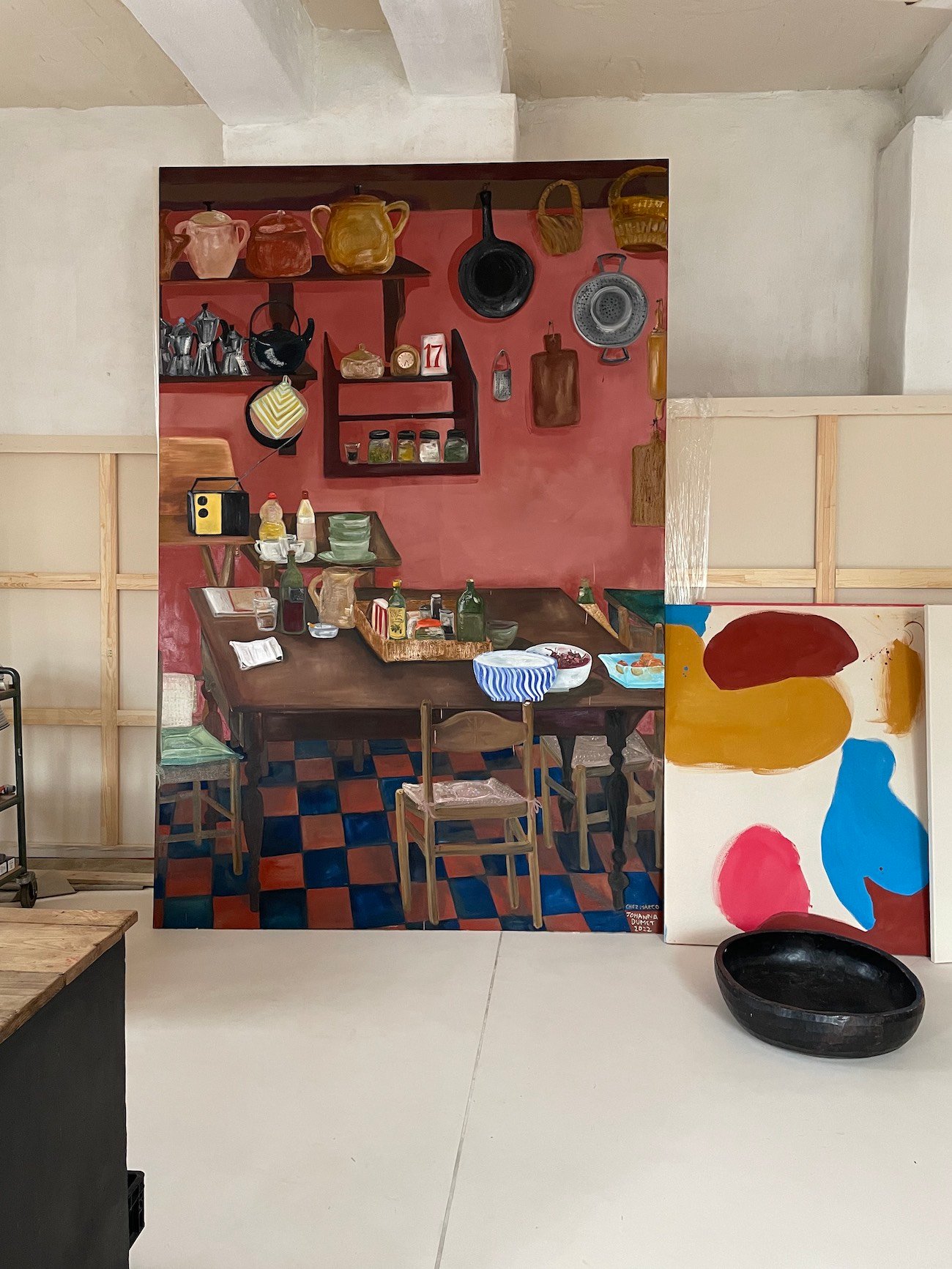
In troubled times, art has often served as a beacon for hope and peace. In the face of the war in Ukraine, many cultural leaders say now should be no different. Ahead of the fair’s second edition which opens in Vienna next week, the Spark Art Fair is aiming to be a ray of light amid dark days.
Speaking about the ongoing conflict, Renger van den Heuvel, Spark Art Fair director, said that he believes cultural exchange is more important than ever. “I agree with András Szántó that a cultural boycott is not the answer… Art is a way to keep the dialogue going, we should not cut off Russian artists. As without dialogue, there will be no space for diplomacy,” said van den Heuvel.
Anastasia Samoylova, Gatorama (2020). Courtesy of Spark Art Fair.
Vienna, as a city, has had its fair share of trials and tribulations but has always maintained a sense of creativity, community, and above all, remained home to great artists. It is in that spirit that the fair enters its second edition. Focusing on individual artist presentations, galleries will show many previously unseen works created especially for the fair.
Among the international galleries participating, Madrid’s Sabrina Amrani will be showcasing work by renowned Russian artist Anastasia. Speaking with me ahead of the fair, Samoylova, who is horrified by the invasion of Ukraine, commented that it’s “important to remember that being able to speak out is a privilege only afforded in the free world, which contemporary Russia is not.”
“As an artist, I do not associate Russian culture with the autocracy of the day,” said Samoylova. “Tchaikovsky, Tolstoy, Malevich, Popova, all lived through horrific state-initiated wars; their ability to continue their work under the constant threat was not compliance, but survival.”
For over 15 years, Samoylova has explored how photographic images shape our understanding of the world. As someone intimately familiar with the effects of barely concealed propaganda on the public, it has been her goal as an artist to question the immediate reading of any image and encourage slower contemplation that would allow for the layers of meaning to come through.
Her presentation for Spark is centered around her greatest concern: the environment. In describing her work, the artist explained, “I see environmental issues as inseparable from the economic and political problems and I aim to point to that in my work, which I hope defies easy categorization as ‘environmental art from a woman’s perspective.’” Samoylova is looking for “the more subtle images that might come closer to forming a psychological portrait of life lived on the climatic knife’s edge.”
Courtesy of Johanna Dumet.
Kamel Mennour gallery will be showing works by French artist Marie Bovo, who similarly explores geopolitical and social issues through photography. Bovo is interested in the ways people are capable of abstracting the lives of individuals into emblems, such as immigrants as “the other.” Bovo photographs specific places, contextualized by social, economic, or political ramifications—without ever photographing an actual person. Her works reveal a dual perspective in which unique situations are able to express a universal dimension, the past hints at the present, and in which different cultures, especially those of the Mediterranean world, reveal their continuity.
This year, Berlin’s Koenig Galerie is showing paintings by the French artist Johanna Dumet. Dumet paints rapidly, her canvases reflecting the emotion and sensory experience of the moment. She explained her process, saying that “even though I always paint figuratively, scenes and objects, I’m not interested in showing them the way we see them, but rather in the way my hands and mind work together at that very moment on the canvas.” Dumet’s work centers around day-to-day life, highlighting the quotidian along with all the emotional highs and lows that go hand in hand with contemporary life. In speaking about her process, she said that she tries “to find shapes that are figurative to me. It’s like looking at clouds, sometimes they are just a white form in the sky, and sometimes it’s a crocodile or a dolphin! I apply the same game to my work.”
Of the artists I have spoken with ahead of the fair, many are exploring socio-political issues and their effects on the daily lives of people. As Anastasia poignantly told me, “My heart is broken by this violence, but I cannot allow evil to defeat my spirit. It’s reassuring to see such an uprising of artists in the international community getting involved with humanitarian aid in Ukraine. While participating in protests provides a boost to morale, I am also grateful to be involved in fundraising efforts for Ukraine through my artwork.”
Perhaps as a reaction to the past few years of turmoil, many artists seem to be looking for the essence of what it means to be human—as well as the artist’s crucial role in capturing the zeitgeist, as they have done throughout history. In this way, by presenting the works of artists from around the world, the Spark Art Fair aims to strengthen the community of art and culture amid an uncertain future.
Spark Art Fair takes place March 24–27 at Marx Halle in Vienna.